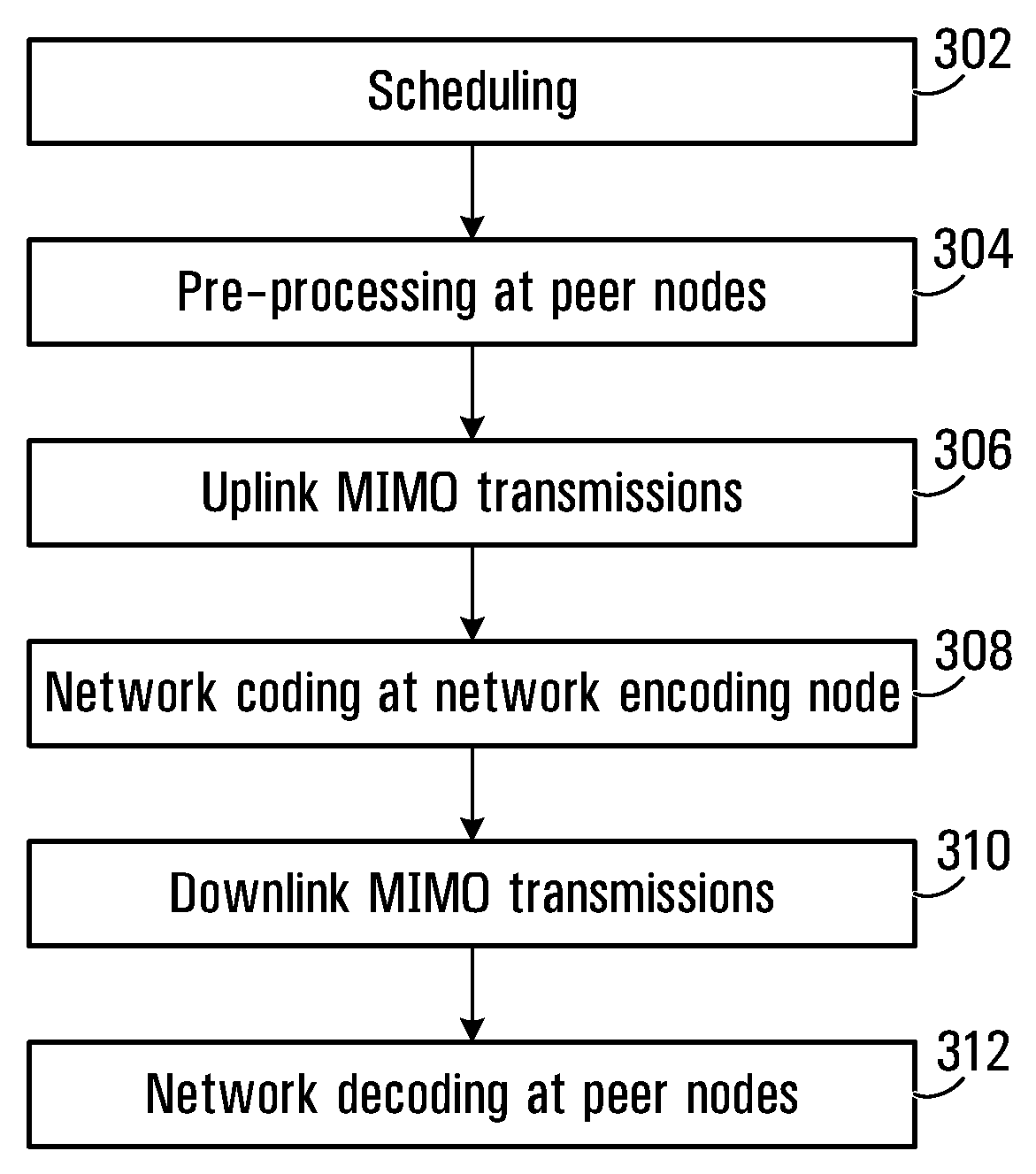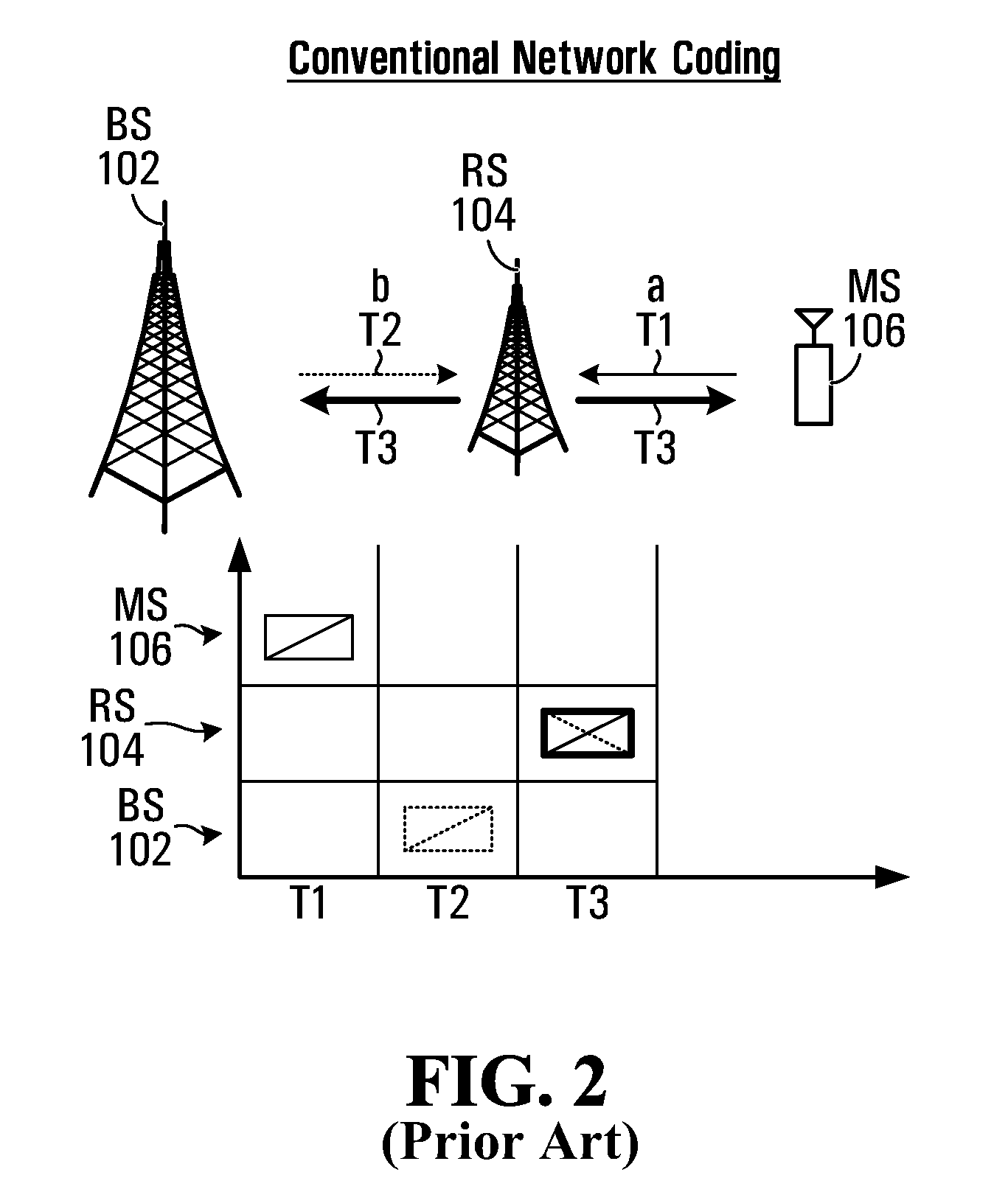MIMO based network coding network
a network coding and network technology, applied in the field of wireless communication systems, can solve problems such as complex demodulation and decoding
- Summary
- Abstract
- Description
- Claims
- Application Information
AI Technical Summary
Benefits of technology
Problems solved by technology
Method used
Image
Examples
Embodiment Construction
[0044]In one embodiment, MIMO based network coding includes:
[0045]a. two peer nodes (or groups) transmitting information to an intermediate network encoding node (such as a transceiver) using the same or a different radio resource (e.g., bandwidth, time-slot). The information could be transmitted using one or more of spatial multiplexing, time division multiplexing, and frequency division multiplexing. In one embodiment the information is transmitted using adaptive virtual MIMO. Here each peer node group contains one or multiple peer nodes that are nearby. In the following text, peer node refers to peer node group.
[0046]b. the intermediate network encoding node receiving the transmissions, applying network coding to the received information, and transmitting the network encoded information as multi-user MIMO. In one embodiment, the MIMO transmission is a spatial multiplexing transmission; and
[0047]c. each peer node (or group) receiving the MIMO streams and applying applicable networ...
PUM
 Login to View More
Login to View More Abstract
Description
Claims
Application Information
 Login to View More
Login to View More - R&D
- Intellectual Property
- Life Sciences
- Materials
- Tech Scout
- Unparalleled Data Quality
- Higher Quality Content
- 60% Fewer Hallucinations
Browse by: Latest US Patents, China's latest patents, Technical Efficacy Thesaurus, Application Domain, Technology Topic, Popular Technical Reports.
© 2025 PatSnap. All rights reserved.Legal|Privacy policy|Modern Slavery Act Transparency Statement|Sitemap|About US| Contact US: help@patsnap.com



